 Facebook
Facebook
 X
X
 Instagram
Instagram
 TikTok
TikTok
 Youtube
Youtube
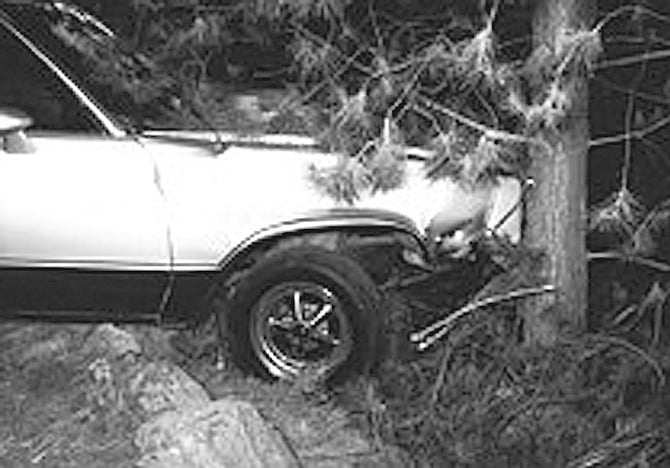
Later this year, Danny Palm, a 60-year-old retired Navy commander and a man described by friends, neighbors, and family as a gentle, honorable man, will return home to his Dictionary Hill neighborhood in Spring Valley after eight and a half years in prison. His crime: killing the neighborhood bully on November 28, 1995.
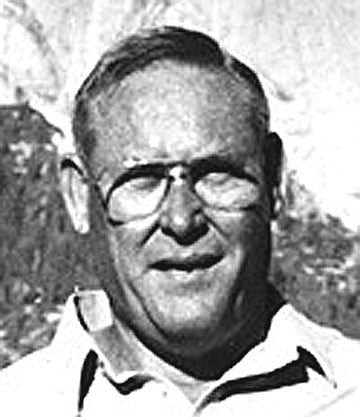
Bully might not be the word to describe John Harper, Jr., who died at the age of 48. In a letter written to Judge William D. Mudd, who presided over Palm's murder trial, Alex Alvarez, Harper's next-door neighbor, described him as an "unstoppable drug-crazed terrorist." Alvarez went on to write that during "the last two years before [Harper's] death, my family and I lived in terrorized fear of him."
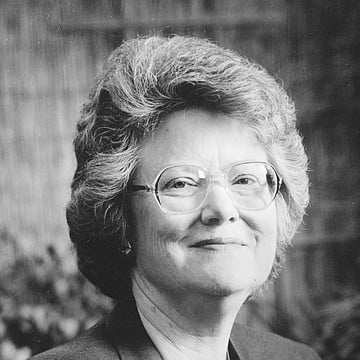
Alvarez wasn't the only victim of Harper's terrorization during that time. Court papers say, "At least 42 residents in the hillside neighborhood centered on the T intersection of Helix Lane and Highview Lane had been harassed by Harper." One of them was Palm. In a motion for a new trial, Elisabeth Semel, Palm's attorney during the penalty phase of the trial, wrote, "Mr. Palm himself had four personal encounters with Harper. During the first incident, Mr. Palm was driving on Helix Street and had just entered the S-curve when a white El Camino, going the opposite direction, veered into his lane... Mr. Palm did not recognize the driver but described him as a middle-aged male with shoulder-length hair and a beard."
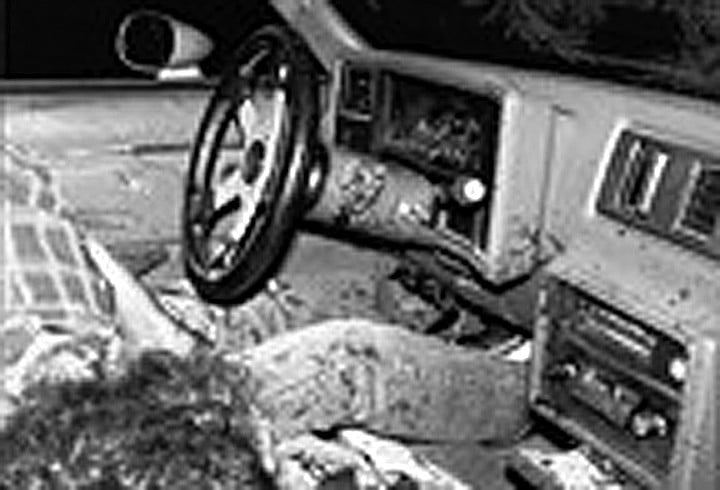
Mr. Palm's second direct incident with Harper occurred in late 1993 or early 1994, when he was a passenger in Charles Smiley's car. The Palms and Smileys were headed to dinner and were driving from Highview Lane onto Helix when they saw an El Camino parked northbound along Helix with its lights turned off. As the Smiley car turned onto Helix, the El Camino's lights came on, and the El Camino closed in on the Smiley car from behind at a high rate of speed. The El Camino turned on its high beams, as it got closer to Smiley's car. Smiley was driving about 25-30 miles per hour on Helix, which is a winding road. The El Camino tailgated Smiley until he pulled over to allow the El Camino to pass. As Smiley pulled over onto the shoulder, the El Camino pulled right alongside Smiley's car, pinning it to the side of the road. Mr. Palm could see that the driver of the El Camino was the same person who had almost hit him previously. The driver was yelling.... When Charles Smiley told the driver he was sorry if he had done something offensive, the driver responded, 'Don't fuck with me. I know where you live.'
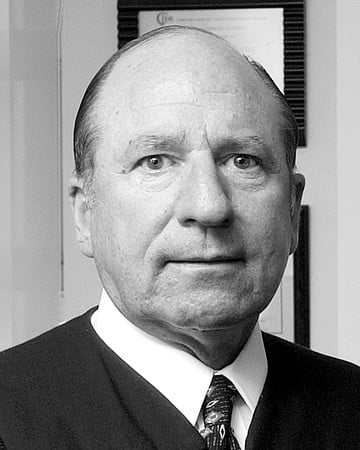
"The third incident involving Mr. Palm occurred in April 1995. He was turning onto Highview Lane, and Harper almost rammed him three times, driving very fast toward the rear of Mr. Palm's car, and then slamming on his brakes at the last minute. Harper was driving a white Ford F-250 pickup at the time. Mr. Palm described his reaction to the incident: 'I was frightened. My hands were shaking with nervousness. I had a kind of sick-in-my-stomach feeling.' "
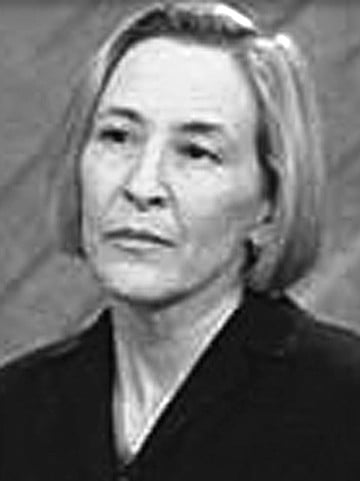
A fourth incident involving Palm and Harper occurred May 19, 1995. Palm heard a loud bang coming from the direction of Harper's house, which his home overlooked. Seeing a cloud of dust coming from that direction, he determined that there had been an automobile accident. Palm got in his car and drove part of the way to Harper's house then parked because "I didn't want [Harper] to connect me with my car and thereby be able to connect me with my house."
Palm walked the rest of the way to Harper's house, where a car had slammed into a telephone pole. Harper and his pickup were there, and the buzz among the neighbors spilling out of nearby houses was that he had caused the accident. In talking to some of them, Palm found out that he wasn't the only one who had been terrorized by Harper while driving the neighborhood's streets. "At least three, maybe five people approached me at that accident site."
Palm, who had brought his camera, snapped some photographs of the accident scene, including shots of the license plate on Harper's pickup. At that point, court papers state, "Harper came up to him...and Mr. Palm snapped a photograph of Harper when he got to be five or six feet away. Harper then said to Palm, 'I'm going to fuck you up.' "
"We had run-ins with Mr. Harper for a couple of years up to the shooting," says Barbara Bunderson, who lives between the Palms' and Harper's former house on Highview Lane. "Our house is on Highview Lane, and if you go down the hill on Highview and kept going straight and didn't make the turn onto Helix, you would go right into Harper's yard. Well, our son, Grant, who was 17 or 18 at the time, came out of our street one day, and as he reached the corner, a car was coming north on Helix. Grant waited for him to go past, and he turned north behind it. At the same time, Harper was in his driveway waiting to pull out behind the same car. So when Grant, who had the right of way, pulled out behind the car, and Harper had to wait for him, it made Mr. Harper irate. And he started chasing Grant, coming up behind him real close, and I believe he even bumped the car. Grant tried to get away, but John kept following him really close and coming up alongside, trying to cut him off. Grant escaped by pulling down a friend's driveway."
Though they were upset about the incident, Bunderson and her husband thought maybe Harper had felt provoked. But the incidents continued. "My daughter pulled out with a friend and had just started by the front of his place when a rock hit her windshield. By this time we knew that Mr. Harper was doing strange things. Elizabeth slammed on the brakes and looked behind, and there he was in the bush on his own property. She whipped around and came...home and told me what happened, and I called the sheriffs. They went down there and came back and said, 'Well, he wasn't home, and we will check in with him some other time,' and it just kind of dropped."
Barbara Bunderson would call the sheriffs twice more regarding Harper, once after her son Grant thought he'd been shot at by Harper as the latter passed him going the opposite direction, and after her daughter Elizabeth was chased down the hill by Harper. "Grant," she recalls, "had pulled out right behind her and saw Harper start to chase her. He went around Mr. Harper, on this winding hill — crazy — and put himself between Elizabeth and John to protect Elizabeth. When he told us later what he had done, my husband and I were horrified."
By early 1995, area residents, most of whom had been menaced by Harper at least once, started holding meetings about the problem. Palm attended the meetings. Their first attempt at a solution was to write a letter to Harper's elderly parents, whom Harper lived with, in hopes they could rein in his behavior. When this produced no results, the group was advised by the sheriff's department to document Harper's activities. From his house higher up Dictionary Hill, Palm could look down on Harper's house. He began to compile detailed logs of Harper's comings and goings, and he snapped rolls of photographs of Harper through a telephoto lens. Palm's skills as a former weapons systems inspector for the Navy made him a natural fit for the task. "He was an obsessive-compulsive type personality," his wife, Carol, said recently, "who kept notes and did that for a living and got paid very well for it."
Despite Palm's efforts, Harper's harassment continued until August 3, 1995, when the district attorney's office filed felony assault charges against Harper in connection with an incident involving Melody Hurt, a neighbor of Palm's. Court papers state, "Hurt claimed that Harper bumped her car after he tailgated her for a distance."
Palm testified at Harper's trial in El Cajon Superior Court. But on the morning of November 22, 1995, a mistrial was declared after the jury hung at eight to four in favor of conviction. The court set November 28 for further proceedings. On that day, Harper pleaded to a misdemeanor reckless driving charge and was put on probation. Around 11:00 that same morning, Carol and Danny Palm, unaware of the plea bargain, received a phone call from a neighbor, Louis Szuch, who told them Harper was driving up the hill toward the Palms' house. Palm would later testify in court, "I felt that John Harper, Jr., was coming up to my house to hurt me or my family."
Palm got dressed and was getting out his .45-caliber semiautomatic pistol and an extra clip of ammunition when he heard his wife call, "He's out front." Looking out a window, Palm saw Harper's silver El Camino stopped in front of his house. "I was terrified," he later testified. "I can remember looking above my head thinking that there might be a Molotov cocktail coming."
After a few nervous minutes, the El Camino slowly rolled down the hill. Palm went outside and, from a hiding place, watched Harper cruise down Highview Lane. He then got into his own car and followed Harper, bringing the .45 and extra ammunition with him. "Dan wanted to make sure that Harper didn't go to the Bundersons'," Carol Palm said, "because the children had been attacked by Harper before."
Down the hill, Palm saw Harper's car stopped at the side of the road. Szuch was leaning in the passenger window talking to Harper. "After Szuch walked away," court papers state, "Harper drove another 10 or 20 feet down the hill, pulled over to the extreme right-hand side of the road, and stopped. Harper waved his arm at Mr. Palm to come down or pass him. 'I was just absolutely terrified,' Mr. Palm testified. He believed that going home was not an option because his wife was there. 'I was panic-stricken; I froze.... I felt pressure...in my face, heat in my face. I was hyperventilating. I felt there was no way to avoid some kind of confrontation, that he was demanding it, and I, after some number of seconds...I eased my foot off the brake, and I coasted down to where my car was side to side with him.' "
Palm later testified that, despite being armed with a .45, as he pulled alongside Harper's car, he "felt like prey for a predator."
Holding up the gun for Harper to see, court documents say, Palm "deliberately slapped the clip into the gun in front of Harper, to demonstrate that this was a serious situation. Nonetheless, at that point, Mr. Palm testified, 'I still felt that he was a threat, and I felt that he was forcing me to confront him, that he had demanded a confrontation, that he wasn't going to leave the neighborhood without one.' "
Palm chambered a round in full view of Harper who, according to Palm, made the threat, "You and your family are as good as dead."
On the witness stand, Palm testified that he went blank and recalled only hearing a faint pop. That pop was a round he fired from his .45 that hit Harper "damn near between the eyes," according to Blaine Bowman, the deputy district attorney who prosecuted the case. The shot, which traveled through Harper's brain stem, was fatal. He slumped forward in his seat, and the car rolled down the hill and came to rest against a tree. "The next thing Mr. Palm knew," court documents state, "he was standing next to Harper's car with his gun in his hand. He did not recall shooting 12 more times or reloading his gun."
Eight of the 13 shots Palm fired traveled through Harper's body. A ninth grazed his scalp. Palm hid the gun in a nearby canyon, then returned home. Two hours and 40 minutes later, sheriff's deputies arrested Palm at his house.
At Palm's murder trial, which began May 16, 1996, Judge William Mudd, of Westerfield trial fame, quickly shut down the self-defense tactic of Palm's attorney, Elliot Kanter. Mudd said the number of shots fired precluded the notion of self-defense. Kanter's tactics shifted to psychological evidence. "They had a doctor," Bowman says, "Dr. Glen Lipson, who, in his initial report, said, 'He may suffer from post-traumatic stress disorder from being in the military.' Then, at the hearing before the jury, the judge said he was not going to allow it because it wasn't a diagnosis. Then Lipson stood up in the back of the courtroom and said, 'Your honor, I will say that he does have post-traumatic stress disorder.' Then he gave Danny Palm a written test a couple of days later, and based on that he said he suffered from extreme post-traumatic stress disorder. So he went from he might have it to he does have it to an extreme case of post-traumatic stress disorder. I think the jury discounted the majority of Dr. Lipson's testimony."
The defense called many of the Palms' neighbors, including Bunderson, to testify regarding Harper's terrorization of their neighborhood. Bowman says, "The only question I ever had for them during cross-examination was, 'Were you ever injured as a result of these actions?' The answer was always no."
Bowman portrayed Palm as a man obsessed with ridding his neighborhood of Harper, a theory he supported by the box of "surveillance notes" Palm kept on Harper. On June 5, 1996, Palm was convicted of second-degree murder. With a gun allegation attached, the conviction carried a sentence of 18 to 20 years to life.
After the conviction, Palm replaced Kanter with Elisabeth Semel, a longtime San Diego defense attorney who now teaches at the University of California at Berkeley. After reviewing the case, Semel's first act was to file a motion for a new trial. In it she argued that Judge Mudd had "committed prejudicial error" by excluding evidence regarding Palm's mental state and personal habits; by "modif[ying] the instruction on imperfect self-defense, with the result that the jury was misinstructed on the law"; and by excluding evidence regarding Harper's violent past. She also argued that Kanter had mishandled his representation of Palm, noting that it was Kanter's first murder trial. "After the Court denied his request for a self-defense instruction," she wrote, "Mr. Kanter argued that Mr. Palm should be acquitted because he was 'unconscious' when he killed Harper. Mr. Kanter suggested that at most his client might be guilty of the lesser offenses of voluntary or involuntary manslaughter. However, he made little mention of these theories in his summation. He did not mention them at all in his closing statement."
Contacted recently in Berkeley, Semel recalled, "I felt very strongly about this motion, that it was meritorious. But in any motion for a new trial, you are asking the very judge who tried the case to say that he was wrong."
Semel also questioned Kanter's courting of the media. (In addition to local coverage, Court TV broadcast the trial live, 48 Hours aired an hourlong special on the case, and the New York Times published a story on it.) "This case had been orchestrated as a trial in the media from the very beginning," she said, "and that was just a grievous error. It undoubtedly, without question, infuriated the judge, and I think it was very clear early on that it infuriated the judge."
On February 28, 1997, after a new-trial hearing that lasted "several days" and involved testimony from expert witnesses in the fields of ballistics, psychology, and legal representation, Judge Mudd denied the motion. Semel's next move was to file a motion for the reduction of the conviction from second-degree murder to involuntary manslaughter, which carried a ten-year sentence with a likely parole release after eight and a half years. On April 17, 1997, Judge Mudd did just that. By way of explanation, Judge Mudd said that, of the pile of letters in support of Danny Palm sent to him during the sentencing phase of the trial, the one from Carol Palm had given him a new perspective on Palm's character. Mudd said Palm had appeared remorseless to him and to jurors. "He was rigid, he was concise, he was precise. Mr. Palm was decidedly a terrible witness, absolutely atrocious. He showed no emotion." But Carol Palm's four-and-a-half-page letter explained that, after 29 years in the Navy, rigidity and repressed emotion were her husband's fall-back positions in times of stress. "The military didn't have room for displays of emotion in Dan's time," she wrote.
Harper's family expressed outrage at the reduction in conviction. Mudd's response: "Not all victims come into court completely pure and innocent. In the real world, occasionally victims bring about their own death."


Later this year, Danny Palm, a 60-year-old retired Navy commander and a man described by friends, neighbors, and family as a gentle, honorable man, will return home to his Dictionary Hill neighborhood in Spring Valley after eight and a half years in prison. His crime: killing the neighborhood bully on November 28, 1995.

Bully might not be the word to describe John Harper, Jr., who died at the age of 48. In a letter written to Judge William D. Mudd, who presided over Palm's murder trial, Alex Alvarez, Harper's next-door neighbor, described him as an "unstoppable drug-crazed terrorist." Alvarez went on to write that during "the last two years before [Harper's] death, my family and I lived in terrorized fear of him."

Alvarez wasn't the only victim of Harper's terrorization during that time. Court papers say, "At least 42 residents in the hillside neighborhood centered on the T intersection of Helix Lane and Highview Lane had been harassed by Harper." One of them was Palm. In a motion for a new trial, Elisabeth Semel, Palm's attorney during the penalty phase of the trial, wrote, "Mr. Palm himself had four personal encounters with Harper. During the first incident, Mr. Palm was driving on Helix Street and had just entered the S-curve when a white El Camino, going the opposite direction, veered into his lane... Mr. Palm did not recognize the driver but described him as a middle-aged male with shoulder-length hair and a beard."

Mr. Palm's second direct incident with Harper occurred in late 1993 or early 1994, when he was a passenger in Charles Smiley's car. The Palms and Smileys were headed to dinner and were driving from Highview Lane onto Helix when they saw an El Camino parked northbound along Helix with its lights turned off. As the Smiley car turned onto Helix, the El Camino's lights came on, and the El Camino closed in on the Smiley car from behind at a high rate of speed. The El Camino turned on its high beams, as it got closer to Smiley's car. Smiley was driving about 25-30 miles per hour on Helix, which is a winding road. The El Camino tailgated Smiley until he pulled over to allow the El Camino to pass. As Smiley pulled over onto the shoulder, the El Camino pulled right alongside Smiley's car, pinning it to the side of the road. Mr. Palm could see that the driver of the El Camino was the same person who had almost hit him previously. The driver was yelling.... When Charles Smiley told the driver he was sorry if he had done something offensive, the driver responded, 'Don't fuck with me. I know where you live.'

"The third incident involving Mr. Palm occurred in April 1995. He was turning onto Highview Lane, and Harper almost rammed him three times, driving very fast toward the rear of Mr. Palm's car, and then slamming on his brakes at the last minute. Harper was driving a white Ford F-250 pickup at the time. Mr. Palm described his reaction to the incident: 'I was frightened. My hands were shaking with nervousness. I had a kind of sick-in-my-stomach feeling.' "

A fourth incident involving Palm and Harper occurred May 19, 1995. Palm heard a loud bang coming from the direction of Harper's house, which his home overlooked. Seeing a cloud of dust coming from that direction, he determined that there had been an automobile accident. Palm got in his car and drove part of the way to Harper's house then parked because "I didn't want [Harper] to connect me with my car and thereby be able to connect me with my house."
Palm walked the rest of the way to Harper's house, where a car had slammed into a telephone pole. Harper and his pickup were there, and the buzz among the neighbors spilling out of nearby houses was that he had caused the accident. In talking to some of them, Palm found out that he wasn't the only one who had been terrorized by Harper while driving the neighborhood's streets. "At least three, maybe five people approached me at that accident site."
Palm, who had brought his camera, snapped some photographs of the accident scene, including shots of the license plate on Harper's pickup. At that point, court papers state, "Harper came up to him...and Mr. Palm snapped a photograph of Harper when he got to be five or six feet away. Harper then said to Palm, 'I'm going to fuck you up.' "
"We had run-ins with Mr. Harper for a couple of years up to the shooting," says Barbara Bunderson, who lives between the Palms' and Harper's former house on Highview Lane. "Our house is on Highview Lane, and if you go down the hill on Highview and kept going straight and didn't make the turn onto Helix, you would go right into Harper's yard. Well, our son, Grant, who was 17 or 18 at the time, came out of our street one day, and as he reached the corner, a car was coming north on Helix. Grant waited for him to go past, and he turned north behind it. At the same time, Harper was in his driveway waiting to pull out behind the same car. So when Grant, who had the right of way, pulled out behind the car, and Harper had to wait for him, it made Mr. Harper irate. And he started chasing Grant, coming up behind him real close, and I believe he even bumped the car. Grant tried to get away, but John kept following him really close and coming up alongside, trying to cut him off. Grant escaped by pulling down a friend's driveway."
Though they were upset about the incident, Bunderson and her husband thought maybe Harper had felt provoked. But the incidents continued. "My daughter pulled out with a friend and had just started by the front of his place when a rock hit her windshield. By this time we knew that Mr. Harper was doing strange things. Elizabeth slammed on the brakes and looked behind, and there he was in the bush on his own property. She whipped around and came...home and told me what happened, and I called the sheriffs. They went down there and came back and said, 'Well, he wasn't home, and we will check in with him some other time,' and it just kind of dropped."
Barbara Bunderson would call the sheriffs twice more regarding Harper, once after her son Grant thought he'd been shot at by Harper as the latter passed him going the opposite direction, and after her daughter Elizabeth was chased down the hill by Harper. "Grant," she recalls, "had pulled out right behind her and saw Harper start to chase her. He went around Mr. Harper, on this winding hill — crazy — and put himself between Elizabeth and John to protect Elizabeth. When he told us later what he had done, my husband and I were horrified."
By early 1995, area residents, most of whom had been menaced by Harper at least once, started holding meetings about the problem. Palm attended the meetings. Their first attempt at a solution was to write a letter to Harper's elderly parents, whom Harper lived with, in hopes they could rein in his behavior. When this produced no results, the group was advised by the sheriff's department to document Harper's activities. From his house higher up Dictionary Hill, Palm could look down on Harper's house. He began to compile detailed logs of Harper's comings and goings, and he snapped rolls of photographs of Harper through a telephoto lens. Palm's skills as a former weapons systems inspector for the Navy made him a natural fit for the task. "He was an obsessive-compulsive type personality," his wife, Carol, said recently, "who kept notes and did that for a living and got paid very well for it."
Despite Palm's efforts, Harper's harassment continued until August 3, 1995, when the district attorney's office filed felony assault charges against Harper in connection with an incident involving Melody Hurt, a neighbor of Palm's. Court papers state, "Hurt claimed that Harper bumped her car after he tailgated her for a distance."
Palm testified at Harper's trial in El Cajon Superior Court. But on the morning of November 22, 1995, a mistrial was declared after the jury hung at eight to four in favor of conviction. The court set November 28 for further proceedings. On that day, Harper pleaded to a misdemeanor reckless driving charge and was put on probation. Around 11:00 that same morning, Carol and Danny Palm, unaware of the plea bargain, received a phone call from a neighbor, Louis Szuch, who told them Harper was driving up the hill toward the Palms' house. Palm would later testify in court, "I felt that John Harper, Jr., was coming up to my house to hurt me or my family."
Palm got dressed and was getting out his .45-caliber semiautomatic pistol and an extra clip of ammunition when he heard his wife call, "He's out front." Looking out a window, Palm saw Harper's silver El Camino stopped in front of his house. "I was terrified," he later testified. "I can remember looking above my head thinking that there might be a Molotov cocktail coming."
After a few nervous minutes, the El Camino slowly rolled down the hill. Palm went outside and, from a hiding place, watched Harper cruise down Highview Lane. He then got into his own car and followed Harper, bringing the .45 and extra ammunition with him. "Dan wanted to make sure that Harper didn't go to the Bundersons'," Carol Palm said, "because the children had been attacked by Harper before."
Down the hill, Palm saw Harper's car stopped at the side of the road. Szuch was leaning in the passenger window talking to Harper. "After Szuch walked away," court papers state, "Harper drove another 10 or 20 feet down the hill, pulled over to the extreme right-hand side of the road, and stopped. Harper waved his arm at Mr. Palm to come down or pass him. 'I was just absolutely terrified,' Mr. Palm testified. He believed that going home was not an option because his wife was there. 'I was panic-stricken; I froze.... I felt pressure...in my face, heat in my face. I was hyperventilating. I felt there was no way to avoid some kind of confrontation, that he was demanding it, and I, after some number of seconds...I eased my foot off the brake, and I coasted down to where my car was side to side with him.' "
Palm later testified that, despite being armed with a .45, as he pulled alongside Harper's car, he "felt like prey for a predator."
Holding up the gun for Harper to see, court documents say, Palm "deliberately slapped the clip into the gun in front of Harper, to demonstrate that this was a serious situation. Nonetheless, at that point, Mr. Palm testified, 'I still felt that he was a threat, and I felt that he was forcing me to confront him, that he had demanded a confrontation, that he wasn't going to leave the neighborhood without one.' "
Palm chambered a round in full view of Harper who, according to Palm, made the threat, "You and your family are as good as dead."
On the witness stand, Palm testified that he went blank and recalled only hearing a faint pop. That pop was a round he fired from his .45 that hit Harper "damn near between the eyes," according to Blaine Bowman, the deputy district attorney who prosecuted the case. The shot, which traveled through Harper's brain stem, was fatal. He slumped forward in his seat, and the car rolled down the hill and came to rest against a tree. "The next thing Mr. Palm knew," court documents state, "he was standing next to Harper's car with his gun in his hand. He did not recall shooting 12 more times or reloading his gun."
Eight of the 13 shots Palm fired traveled through Harper's body. A ninth grazed his scalp. Palm hid the gun in a nearby canyon, then returned home. Two hours and 40 minutes later, sheriff's deputies arrested Palm at his house.
At Palm's murder trial, which began May 16, 1996, Judge William Mudd, of Westerfield trial fame, quickly shut down the self-defense tactic of Palm's attorney, Elliot Kanter. Mudd said the number of shots fired precluded the notion of self-defense. Kanter's tactics shifted to psychological evidence. "They had a doctor," Bowman says, "Dr. Glen Lipson, who, in his initial report, said, 'He may suffer from post-traumatic stress disorder from being in the military.' Then, at the hearing before the jury, the judge said he was not going to allow it because it wasn't a diagnosis. Then Lipson stood up in the back of the courtroom and said, 'Your honor, I will say that he does have post-traumatic stress disorder.' Then he gave Danny Palm a written test a couple of days later, and based on that he said he suffered from extreme post-traumatic stress disorder. So he went from he might have it to he does have it to an extreme case of post-traumatic stress disorder. I think the jury discounted the majority of Dr. Lipson's testimony."
The defense called many of the Palms' neighbors, including Bunderson, to testify regarding Harper's terrorization of their neighborhood. Bowman says, "The only question I ever had for them during cross-examination was, 'Were you ever injured as a result of these actions?' The answer was always no."
Bowman portrayed Palm as a man obsessed with ridding his neighborhood of Harper, a theory he supported by the box of "surveillance notes" Palm kept on Harper. On June 5, 1996, Palm was convicted of second-degree murder. With a gun allegation attached, the conviction carried a sentence of 18 to 20 years to life.
After the conviction, Palm replaced Kanter with Elisabeth Semel, a longtime San Diego defense attorney who now teaches at the University of California at Berkeley. After reviewing the case, Semel's first act was to file a motion for a new trial. In it she argued that Judge Mudd had "committed prejudicial error" by excluding evidence regarding Palm's mental state and personal habits; by "modif[ying] the instruction on imperfect self-defense, with the result that the jury was misinstructed on the law"; and by excluding evidence regarding Harper's violent past. She also argued that Kanter had mishandled his representation of Palm, noting that it was Kanter's first murder trial. "After the Court denied his request for a self-defense instruction," she wrote, "Mr. Kanter argued that Mr. Palm should be acquitted because he was 'unconscious' when he killed Harper. Mr. Kanter suggested that at most his client might be guilty of the lesser offenses of voluntary or involuntary manslaughter. However, he made little mention of these theories in his summation. He did not mention them at all in his closing statement."
Contacted recently in Berkeley, Semel recalled, "I felt very strongly about this motion, that it was meritorious. But in any motion for a new trial, you are asking the very judge who tried the case to say that he was wrong."
Semel also questioned Kanter's courting of the media. (In addition to local coverage, Court TV broadcast the trial live, 48 Hours aired an hourlong special on the case, and the New York Times published a story on it.) "This case had been orchestrated as a trial in the media from the very beginning," she said, "and that was just a grievous error. It undoubtedly, without question, infuriated the judge, and I think it was very clear early on that it infuriated the judge."
On February 28, 1997, after a new-trial hearing that lasted "several days" and involved testimony from expert witnesses in the fields of ballistics, psychology, and legal representation, Judge Mudd denied the motion. Semel's next move was to file a motion for the reduction of the conviction from second-degree murder to involuntary manslaughter, which carried a ten-year sentence with a likely parole release after eight and a half years. On April 17, 1997, Judge Mudd did just that. By way of explanation, Judge Mudd said that, of the pile of letters in support of Danny Palm sent to him during the sentencing phase of the trial, the one from Carol Palm had given him a new perspective on Palm's character. Mudd said Palm had appeared remorseless to him and to jurors. "He was rigid, he was concise, he was precise. Mr. Palm was decidedly a terrible witness, absolutely atrocious. He showed no emotion." But Carol Palm's four-and-a-half-page letter explained that, after 29 years in the Navy, rigidity and repressed emotion were her husband's fall-back positions in times of stress. "The military didn't have room for displays of emotion in Dan's time," she wrote.
Harper's family expressed outrage at the reduction in conviction. Mudd's response: "Not all victims come into court completely pure and innocent. In the real world, occasionally victims bring about their own death."
Comments